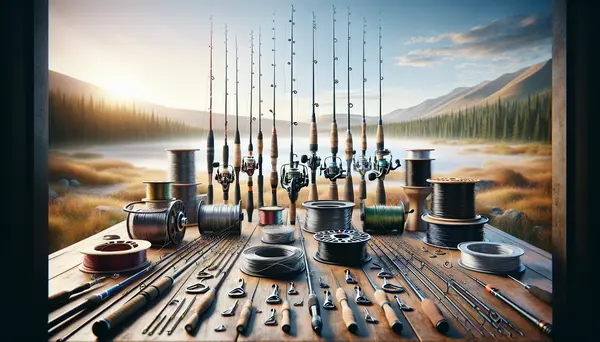Table of Contents:
Introduction to Fishing Wire
Fishing is a sport that requires not only skill but also the right equipment. One of the most important pieces of gear in your fishing arsenal is the fishing wire. This seemingly simple component plays a crucial role in determining whether you land that big catch or watch it swim away. In this guide, we will delve into everything you need to know about choosing the perfect fishing wire for your needs.
Understanding Different Types of Fishing Wires
The first step towards selecting an ideal fishing line involves understanding its different types. The three main categories are monofilament, fluorocarbon and braided lines.
Monofilament Lines
Monofilament lines, often referred to as 'mono', have been around for decades and remain popular due to their versatility and affordability. They're easy to handle, making them suitable for beginners.
Fluorocarbon Lines
If invisibility underwater is what you seek, then fluorocarbon lines should be your go-to choice. These wires sink faster than mono-lines because they’re denser, which makes them excellent for deep water fishing.
Braided Lines
Braided lines,, known for their high strength-to-diameter ratio, offer superior durability compared with other types of wires. Their lack of stretch provides increased sensitivity so you can feel even subtle bites from fish.
Pros and Cons of Different Types of Fishing Wires
| Type of Fishing Wire | Pros | Cons |
|---|---|---|
| Monofilament | Easy to handle, Good knot strength, Fairly abrasion-resistant | Can absorb water, Stretch more than other types |
| Fluorocarbon | Almost invisible underwater, More abrasion resistance than monofilament | Not easy to knot, More expensive than monofilament |
| Braided | Very strong, No stretch, Last longer | Visible underwater, Could be harder to handle for beginners |
Selecting Your Line Based on Target Species & Environment
Your target species and environment play significant roles when deciding on a type of line.
For instance,bass anglers might prefer fluorocarbons due to their low visibility under water. On the other hand, if you're fishing in heavy cover or targeting large species, a braided line's strength and durability would be beneficial.
Choosing the Right Line Weight
The weight of your fishing wire, also known as its test strength, is another crucial factor to consider. This refers to how much weight the line can hold before breaking. The type of fish you aim to catch will largely determine this - larger fish require heavier lines.
Color Considerations for Fishing Wire
Fishing wires come in various colors which serve different purposes.
Clear or blue-colored lines are generally good for clear waters while green works well in vegetation-heavy areas. High-visibility colors like yellow are ideal when tracking your line’s movement is essential.
Diameter & Abrasion Resistance
A thinner diameter often means better lure action and less visibility underwater but it might compromise on abrasion resistance – an important consideration if you’re fishing around structures that could fray your line.
In Conclusion: Choosing Your Ideal Fishing Wire
Selecting the right fishing wire isn't just about picking one with high tensile strength or low visibility; it involves considering several factors including target species, environment conditions, color preferences and more.
Remember that there's no 'one-size-fits-all' solution here - what works best depends entirely on individual needs and circumstances. So take time understanding these aspects thoroughly so that next time when you hit the waters, not only do you have fun but also increase chances of landing those dream catches!
Frequently Asked Questions: Selecting Your Fishing Line
What are the different types of fishing wire?
The main types of fishing wires are monofilament, fluorocarbon, and braided fishing lines. Each has its strengths and weaknesses and are better suited for certain types of fishing.
What type of fishing line should I use for bass fishing?
Braided line is often recommended for bass fishing because it's strong and has zero stretch, which makes it perfect for pulling bass out of heavy cover.
How should I choose the appropriate line strength?
The line strength, or test, should be chosen based on the type of fish you're targeting. A 4-8 lb test line should be adequate for smaller species like trout and panfish, while a 20-25 lb test line is recommended for larger fish like catfish and salmon.
Do different colored lines make a difference?
Yes, color can affect a line's visibility in the water. Clear lines are generally good for clear water, while green lines work well in water filled with algae. The choice of the line color also depends on the fish species as some can see certain colors better than others.
How often should I replace my fishing line?
The frequency of changing your fishing line depends on how often you fish. As a general rule, it is recommended to change your fishing line at least once per season.







